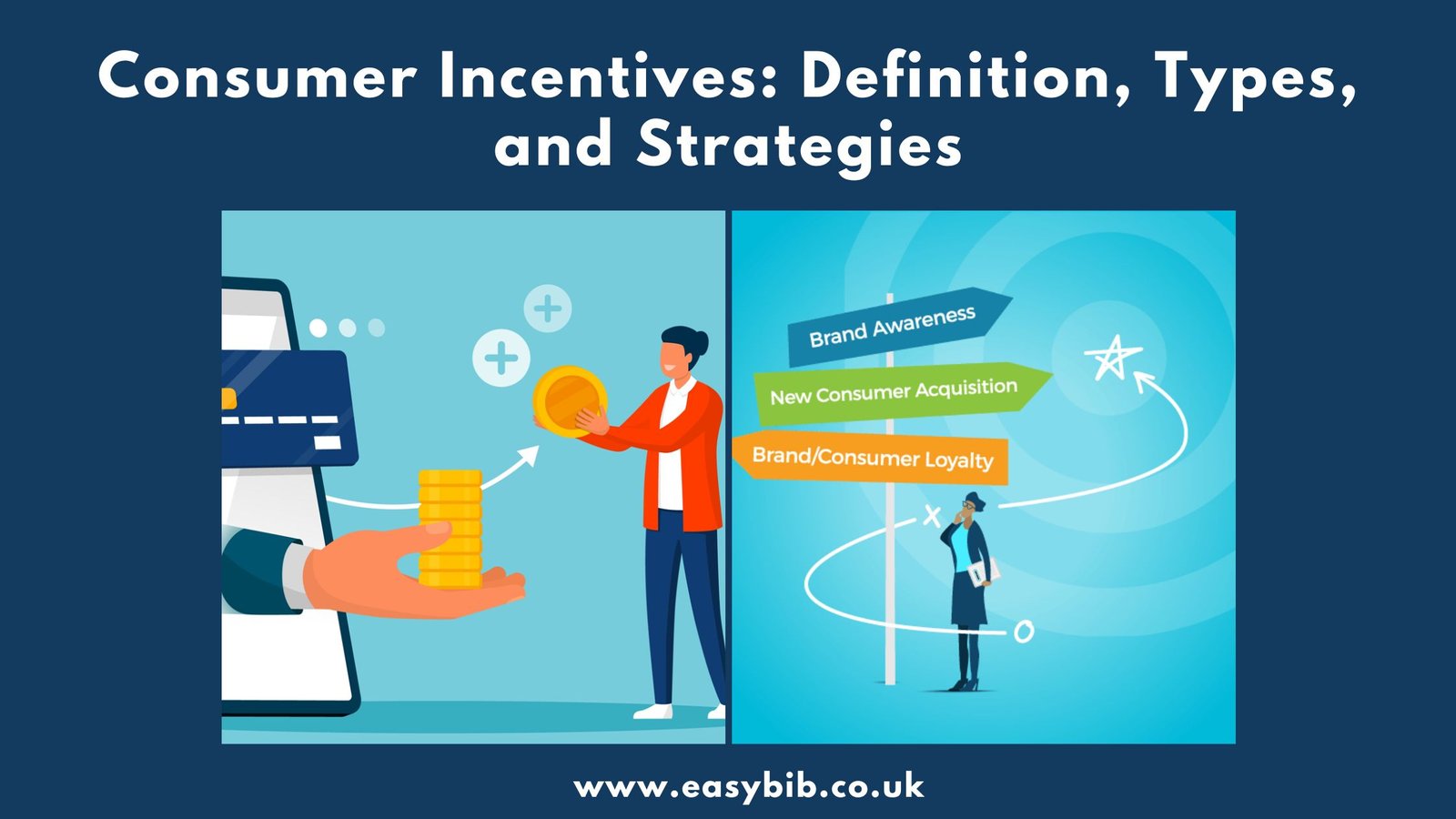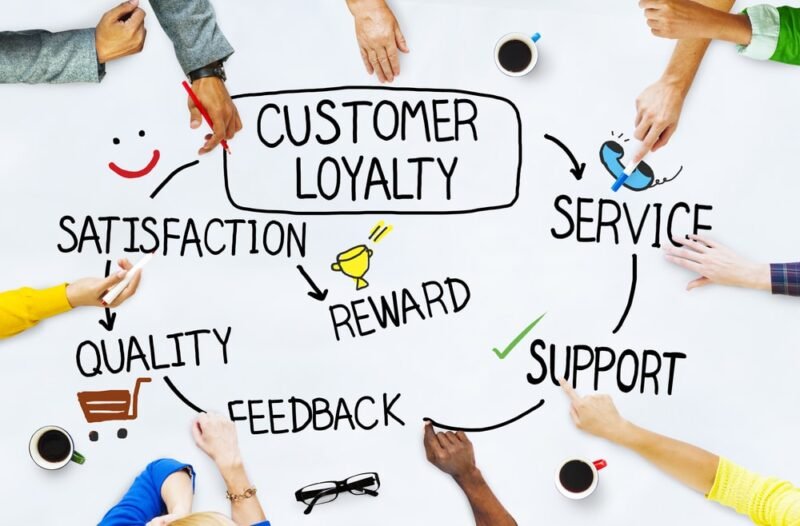Consumer Incentives: Definition, Types, and Strategies

Consumer incentives are tools that businesses use to encourage desired behaviors from customers. These incentives go beyond simply selling a product. They reward actions like purchases, referrals, app usage, or loyalty. Companies use incentives to attract new customers, retain existing ones, and increase engagement.
Incentives can be monetary or non-monetary, physical or digital. Understanding consumer incentives is critical for businesses aiming to build strong customer relationships. Well-designed incentives create value for both the customer and the brand.
What Are Consumer Incentives?
Consumer incentives are benefits offered to motivate consumers to take specific actions. They are not limited to discounts or price reductions. Incentives may include loyalty points, free gifts, exclusive access, cash-back, or digital rewards.
The core idea is to add perceived value. Incentives influence decision-making, encourage repeated purchases, and strengthen brand loyalty. In a competitive market, incentives help brands stand out and foster emotional connections with consumers. Digital incentives are particularly common now, delivered via apps, emails, or online platforms.
Types of Consumer Incentives
Monetary Incentives
Monetary incentives directly affect the cost of a product or service. Examples include discounts, cash-back, gift cards, and vouchers. These are straightforward and easy for consumers to understand. They create immediate motivation to buy or engage. For example, offering £10 off a first purchase can attract new customers quickly. However, overuse may reduce profit margins and shift focus away from the brand’s value.
Non-Monetary Incentives
Non-monetary incentives appeal to emotions, convenience, or recognition. These include loyalty points, VIP membership, early access to products, and exclusive offers. Non-monetary incentives often create stronger emotional bonds with the brand. For instance, giving customers early access to a product launch makes them feel valued. App login rewards, digital badges, and referral bonuses also fall under this category. They encourage regular engagement and long-term loyalty.
Examples of Consumer Incentives
Loyalty programs are a popular example. Customers earn points per purchase, redeemable for rewards or discounts. Referral programs reward existing customers for bringing new ones. Time-limited offers or flash sales create urgency.
Free trials and samples reduce perceived risk and encourage adoption. Digital incentives, such as bonus points for app logins or completing a profile, are increasingly common. These examples show that incentives can target both acquisition and retention.
Strategies to Implement Consumer Incentives
Effective incentives require careful planning. The first step is defining objectives. Do you want to increase purchases, drive app engagement, or attract referrals? Next, understand your audience. Are they motivated by discounts, rewards, status, or convenience?
Then, select the right type of incentive. Monetary rewards work for price-sensitive consumers. Non-monetary rewards appeal to those seeking recognition or exclusivity. The delivery process should be simple and clear. Complicated redemption methods reduce participation. Finally, track performance. Measure engagement, redemption rates, and long-term impact to refine your strategy.
Digital Consumer Incentives
Digital incentives are delivered through online channels or mobile apps. They may include app login rewards, digital points, unlockable content, or gamified experiences. These incentives encourage daily interaction and engagement.
For example, telecom companies may offer extra data for monthly app logins. Retailers may give bonus points for online purchases. Digital incentives are cost-effective, scalable, and easily personalized. They also allow brands to gather data and analyze consumer behavior. Proper design and clear instructions are key to success.
Benefits of Consumer Incentives

Consumer incentives drive customer loyalty and repeat purchases. They improve engagement with the brand. Incentives can increase overall revenue by encouraging higher spending. They also differentiate brands in competitive markets.
Well-designed incentives create a positive customer experience and emotional attachment. Digital incentives provide measurable results, allowing marketers to track ROI accurately. They also foster community building, as consumers feel rewarded for their interactions.
Challenges and Risks
While incentives are valuable, they come with challenges. Overuse of discounts may reduce profit margins. Customers may expect constant rewards, decreasing brand perception. Poorly designed incentives may attract the wrong behaviors.
Complicated redemption processes can frustrate customers. Digital incentives raise concerns about privacy and data security. Measuring the effectiveness of incentives is essential. Businesses must balance short-term gains with long-term brand strategy.
Conclusion
Consumer incentives are powerful tools to influence behavior, increase loyalty, and boost engagement. They include monetary rewards, non-monetary rewards, and digital incentives. When designed strategically, incentives benefit both customers and businesses.
Key factors for success include clear objectives, audience understanding, simple delivery, and performance tracking. By implementing thoughtful consumer incentives, companies can strengthen relationships, increase sales, and create a competitive advantage in the market.
Frequently Asked Questions
1. What are consumer incentives?
Consumer incentives are rewards or benefits offered to customers to encourage specific actions, such as purchases, referrals, or app engagement.
2. What types of consumer incentives exist?
There are monetary incentives like discounts, cash-back, and gift cards, and non-monetary incentives like loyalty points, VIP access, and digital rewards.
3. How do digital consumer incentives work?
Digital incentives are delivered via apps or online platforms. Examples include login rewards, bonus points, gamified experiences, and app-only offers.
4. Why are consumer incentives important?
They increase customer engagement, loyalty, repeat purchases, and overall revenue. They also differentiate brands in competitive markets.
5. Can consumer incentives backfire?
Yes. Overuse of discounts can lower brand value, and complex redemption processes can frustrate customers. Poorly designed incentives may also attract the wrong behaviors.
6. What are some examples of consumer incentives?
Examples include loyalty programs, referral rewards, free trials, limited-time offers, app login bonuses, and exclusive product access.
7. How can businesses design effective consumer incentives?
Define clear objectives, understand your audience, choose the right type of incentive, make redemption simple, and measure performance to refine strategies.
8. Do consumer incentives increase long-term loyalty?
Yes, well-designed incentives, especially non-monetary and personalized digital rewards, can strengthen emotional connections and encourage repeat engagement.
